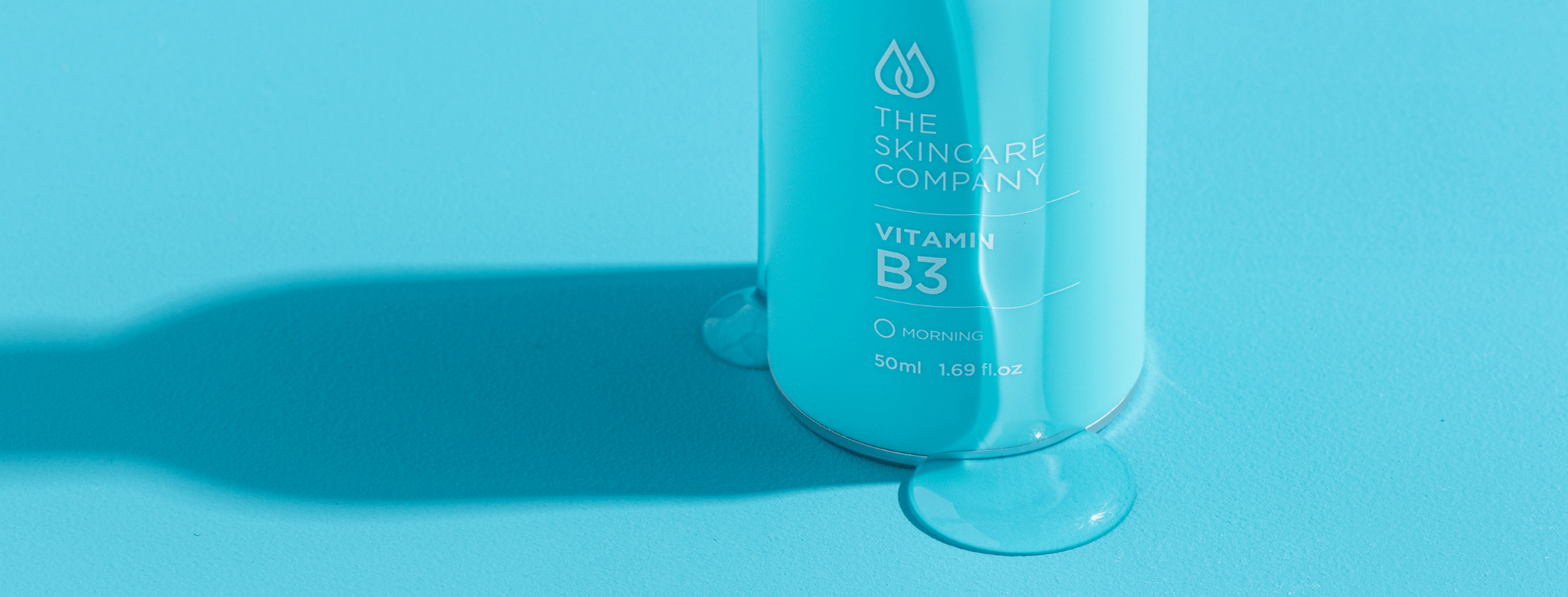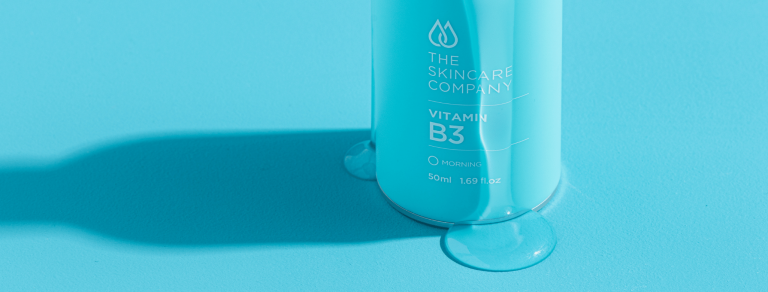Serum Spotlight: Vitamin B3 (Niacinamide)
What is Niacinamide?
Niacinamide (Vitamin B3) is a significant and favourite active ingredient in our formulations because of its versatility. Niacinamide is an essential compound required for optimal skin function including assisting in moisture retention, keratin and ceramide synthesis, and controlling sebum production. It is one of the most well-studied bioactive cosmeceutical ingredients. This is why we use niacinamide in several of our product formulations.
Vitamin B3 Serum
In the formulation of our Niacinamide Vitamin B3 Serum, Niacinamide isn’t working alone; we also include multifunctional active ingredients with synergistic benefits.
-
- Methylsulfonylmethane (MSM) is suitable for the treatment of a variety of skin conditions. It helps to reduce puffiness, discolouration, and swelling. Some acne treatments address clogged pores with harsh chemicals, but MSM offers a gentler way to treat inflammation associated with acne. MSM reinvigorates collagen production as it starts to decrease, therefore it’s also an excellent ingredient to combat the signs of aging right at the source. Incidentally, increased collagen production in the skin helps to repair acne-damaged skin tissue that could result in facial scarring.
-
- Hydroxytyrosol is a bioactive ingredient derived from olive extract and is a powerful antioxidant with anti-inflammatory and anti-aging benefits. Hydroxytyrosol has demonstrated an exceptional capacity for neutralising free radicals. It is a potent, natural antioxidant because it is capable of donating electrons to electron-depleted free radicals, thus reducing their reactivity and preventing them from damaging DNA, lipids, and proteins. Furthermore, hydroxytyrosol promotes the expression of endogenous antioxidant enzymes, thus enhancing the body’s own defense systems against oxidative stress. In addition to its exceptional antioxidant capacity, hydroxytyrosol is also highly bioavailable compared to other antioxidant compounds.
-
- Salicylic acid, also called beta-hydroxy acid (BHA), is a multifunctional ingredient that addresses many of the systemic causes of acne. Its primary benefit is as an exfoliant, helping shed dead skin. Because it has the ability to penetrate into the pore lining and exfoliate inside the pore as well as on the surface of the skin, it is especially effective for reducing breakouts, including blackheads and whiteheads. In addition to these benefits, salicylic acid also has soothing properties to calm aggravated skin, can help minimise the appearance of an uneven skin tone, and has hydrating abilities that can result in smoother skin.
What does it treat?
Niacinamide has a well-established role in dermatology as it can be used to treat a broad range of skin disorders including acne, pigmentation, rosacea, atopic dermatitis, and to prevent photoaging.
Our Niacinamide Vitamin B3 Serum is a great multi-tasker with brightening, oil regulation, and anti-aging properties. As niacinamide helps to strengthen the outer layer of the skin it can be very effective when treating pigmentation while hydrating and nourishing the skin. It has been shown to help the skin from losing water content thus improving skin hydration of the dermis and reducing the appearance of fine lines and wrinkles. It also helps decrease skin discolouration, redness, and sallowness. Niacinamide pairs well with other actives, which makes it a great addition to any skincare routine.
References
1. Nicotinamide and the skin (Review Article). Chen and Damian, Australasian Journal of Dermatology, 2014, 55, pp 169-175.
2. A review of nicotinamide: treatment of skin disease and potential side effects. Rolfe, Journal of Cosmetic Dermatology, 2014, 13, pp 324-328.
3. Combined effects of silymarin and methylsulfonylmethane in the management of rosacea: clinical and instrumental evaluation. Journal of Cosmetic Dermatology, 2008, 7, pp 8-14.
4. Hydroxytyrosol: Bioavailability, toxicity and clinical applications. Food Research International 2018, 105, pp 654-667.
5. Management strategies for acne vulgaris. Whitney and Ditre, Clinical, Cosmetic and Investigational Dermatology 2011, 4, pp 41.
6. Studies on the effect of salicylic acid on normal skin. Davies and Marks, British Journal of Dermatology, 1976, 95, pp 187.


